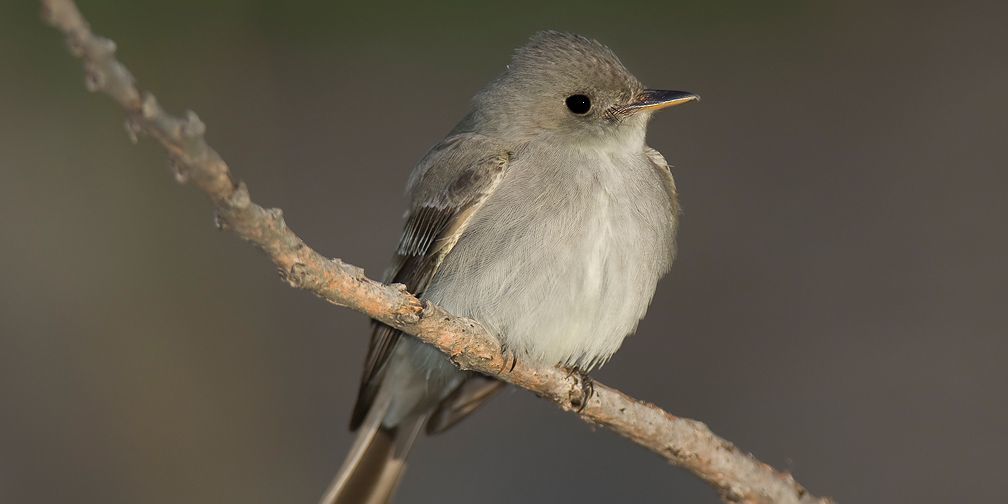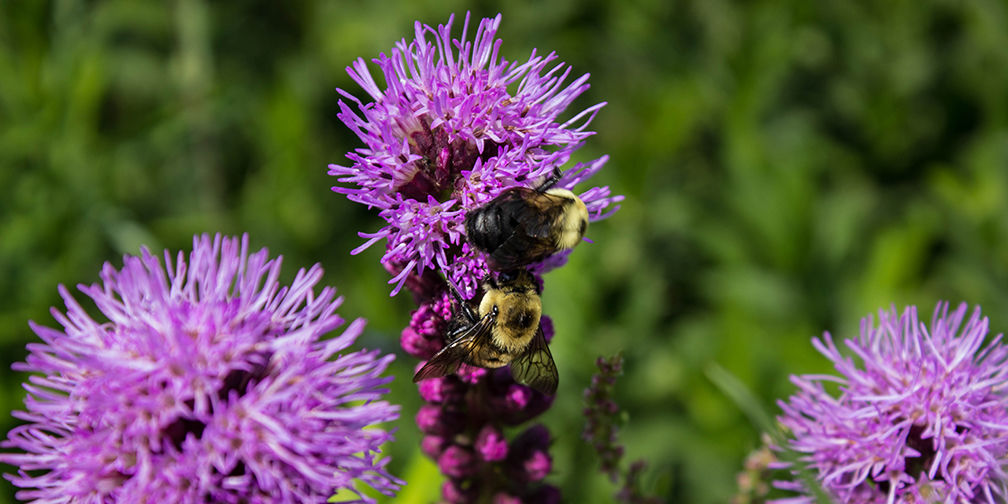Ontario Nature Blog
Receive email alerts about breaking conservation
and environmental news.
© Lora Denis
Thundering Waters © John Bacher
Veteran environmentalist John Bacher is appealing a decision by the Niagara Falls city council approving a $1.5 billion development that threatens provincially significant wetlands and wildlife habitat in the Thundering Waters Forest. We asked John about the appeal and what’s at stake for Thundering Waters.
Q: John, why have you decided to appeal the council’s decision?
John: This development would negatively impact one of the largest blocks of native Carolinian habitat in Ontario. The first stage of the project will affect 120 acres, with a second phase planned that would affect about 380 additional acres. Such large blocks of natural habitat are rare in Niagara, and are very important for the survival of wildlife such as the endangered Acadian flycatcher which is present on the site.

Q: What makes this place special?
John: There’s a diversity of habitats such as hawthorn-dominated savannah, which is home to species like black-billed cuckoo, butterfly milkweed, the threatened barn swallow and dense blazing star, a threatened wildflower. What I find most amazing are the symphonies of western chorus frogs, spring peepers and wood frogs that breed in the vernal pools.

Q: What sort of development is being proposed?
John: It’s a mix of commercial and residential development, of various densities.
Q: Appealing the decision is bound to take a toll on you personally, for example, in terms of your time and energy if not financially as well. Why is this place so important to you?
John: The greatest achievement in my life has been to keep this ecosystem intact for the past decade. I first learned about the development threats from long-time activist Jean Grandoni back in 2008. Since then, many friends have helped me appreciate the diverse wonders of this place, including John Lynn, who worked to have much of the area designated as a provincially significant wetland, Daniel Nardone who discovered the dense blazing star with me, Martin Munoz who found a sink hole, and Willem Willems who has documented foraging habitat for the at-risk snapping turtle.

Q: The developer claims to have addressed the environmental concerns. Is this the case?
John: Not in my opinion. One of the developer’s agents is trying to convince the provincial government to lower the rating of three wetland blocks so that development can take place on the wetlands. That’s what I’d call dodging environmental concerns, not addressing them.
You can visit John Bacher’s blog for more information about the appeal.
Gananoque Lake Nature Reserve © Smera Sukumar
thanks Anne for posting this. I was a big beneficiary of LPASC. They found reports from MNRF which the Niagara Falls Planning Department tried to suppress. I did not publicize this out of fear of triggering their termination. For more details including a painting in their honour, go to my weblog, http://www.johnbacherphd.com
The new LPAT is turning out to be quite different from the Ontario Municipal Board (OMB) in that the deck is really stacked against citizen appellants. I’ve been participating in an appeal process that is a little further along in the new process than the one John now finds himself in. The LPAT is still trying to figure out the limits of its jurisdiction – and no doubt John’s hearing is going to be impacted by the reference to Divisional Court in the Toronto Rail Deck matter (and potential references from what’s going on here in Sudbury). That said, where an approval authority like the City of Niagara Falls has made a favorable decision on development, appellants are severely disadvantaged as the LPAT will no longer hear cases ‘de novo’ – and appears to be, instead, restricted on making findings to just three areas: conformity with provincial plans and municipal/regional official plans; and consistency with the PPS. It sounds like John has a pretty good case to present with regards to developing in a PSW – but a good tactic for the developer/municipality to use to prevail will be to bankrupt him into withdrawing. The one thing needed to prevail at the new LPAT is this: deep pockets.
All part of the problems created by an ever growing human population. We need to address the root cause (human over population) and start educating and encouraging people to have less kids (one or two kids per family at maximum) so that our population can stop growing and then gradually decline down to a sustainable number that allows room and resources for other species and habitats to survive and hopefully eventually thrive again ! Of course, we need to protect and save as much intact natural habitat as possible so that in the future there will be wild populations to seed and sustain all of our wonderful natural diversity !
As always, I am thinking of what Chief Seattle is supposed to have said in 1854:
“We did not weave the web of life, we are merely strands in it. Whatever we do to the web, we do to ourselves.”
Wholeheartedly agree with the positions taken here and support all efforts to halt further environmental damage, which means halting further “development”t.
Thanks for the supportive comments. To undersand the importance of Thundering Waters the rare natural areas in Windsor Ojibway Park is helpful. Threatened by a proposed steel mill in the 1950,l the park likewise combines vernal pools lined with Pin Oaks that provide breeding habitat for amphibians, and savnnah lands that provide habitat for the Threatened Dense Blazing Star. If properly understood studying the site would help us understand more about threatened and rareecies. An ecological consultant for the developer observed that the regionally rare Butterfy Mlkweed are not where they are supposed to be. This shows that the persistence of the species, illustrates how it reveals important knowledge gaps about the species. The same is true for the Wood Thursh aand the Eastern Wood Pewee,k which nests here successsfully, although developer funded studies’ mock it habitatal
If the OMB upholds this project its decision should be challenged by way of seeking a judicial review. In the face of a rapidly deepening climate change crisis outrageous projects like this are nothing less than criminal and show the indefensible indifference and blatant irresponsibility to future generations of those supporting it towards the environmental nightmares on the immediate horizon. Fight to win!
Just stop this!
Thank you for your good work on this issue.
Thanks to Dr.Bacher for fighting the good fight. I hope the local authorities see the light.
I live in Toronto and am similarly closely connected to remaining natural heritage in Toronto (ANSI/ESA), particularly High Park, mostly designated.
We’ve had some major development adjacent to natural heritage already but now we are facing a massive development(potentially 6,000 more people across of High Park). This would be affecting watershed and ANSI at many levels including resulting cumulative indirect impacts from unsustainable use and undermining of ecological function.
We can no longer continue compromising of our natural heritage, whether within the city boundaries (Toronto) or outside (Greenbelt). Provincial Policy Statement 2014 stresses its policies being “minimum standards”, while the municipalities can go beyond this protection level. What we see in reality is not even implementing those minimum standards. Dodging environmental concerns has been the issue all over the place.
Similarly as you, I am involved at OMB (grandfathered cases) in respect to development proposals.